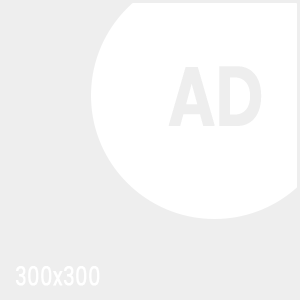Struggling with acne? Learn how to identify fungal acne vs hormonal acne. Get dermatologist-approved treatments for each type + prevention tips.
Table of Contents
Introduction
Suppose you’ve been struggling with persistent breakouts that don’t respond to traditional acne treatments like salicylic acid or benzoyl peroxide. In that case, you might be dealing with either fungal acne vs hormonal acne – two commonly confused but fundamentally different skin conditions.
The problem? Using the wrong treatment can make your acne worse:
- Applying anti-bacterial acne products to fungal acne may increase yeast overgrowth
- Treating hormonal acne with antifungals will do nothing for underlying hormone imbalances
Read also: Best Soap for Pimples: Clear Skin Starts Here
Key Statistics Many Don’t Know: Fungal acne vs Hormonal acne
- 85% of women experience hormonal acne flare-ups before their period (American Academy of Dermatology)
Real-Life Scenarios We’ll Solve:
✔ “Why do I get itchy little bumps that won’t pop?” → Likely fungal
✔ “Why do I keep getting deep, painful cysts on my jawline?” → Probably hormonal
✔ “Why does my acne improve with antibiotics but come back worse?” → Classic fungal acne pattern
What Is Fungal Acne?
Fungal acne is caused by an overgrowth of Malassezia yeast in hair follicles. Unlike bacterial acne, it:
- Appears as tiny, uniform whiteheads
- Often itches intensely
- Clusters on forehead, chest, and back
- Worsens with heat, sweat, or occlusive products
Common Triggers
- Humid climates
- Antibiotic use
- Heavy moisturizers/oily skincare
What Is Hormonal Acne?
Hormonal acne results from fluctuations in androgen levels, leading to excessive oil production. It typically:
- Forms deep, painful cysts on the chin/jawline
- Flares before periods (in women)
- May indicate PCOS or insulin resistance
Key Triggers
- Menstrual cycle changes
- Stress (cortisol spikes)
- High-glycemic or dairy-rich diets
Fungal vs Hormonal Acne: 5 Key Differences “Fungal acne vs Hormonal acne”
| Characteristic | Fungal Acne | Hormonal Acne |
|---|---|---|
| Appearance | Small, uniform whiteheads | Large, inflamed cysts |
| Location | Forehead, chest, back | Chin, jawline, lower face |
| Itchiness | Yes (often severe) | Rare |
| Response to Treatment | Improves with antifungals | Needs hormone regulation |
| Common Triggers | Sweat, humidity, oils | Periods, stress, diet |
(This comparison table targets featured snippet opportunities for “difference between fungal and hormonal acne”)
How to Treat Fungal Acne (Malassezia Folliculitis)
1. Antifungal Washes
- Nizoral (2% ketoconazole): Lather on affected areas 2-3x/week “Fungal acne vs Hormonal acne”
- Selsun Blue (1% selenium sulfide): Reduces yeast overgrowth
2. Topical Antifungals
- Clotrimazole cream (Lotrimin): Apply 2x daily
- Terbinafine (Lamisil): For resistant cases
3. Fungal-Acne-Safe Skincare
✅ Avoid:
- Fatty alcohols (cetearyl, stearyl)
- Most plant oils (except MCT oil)
- Occlusives like petroleum jelly
(Targets long-tail keyword “fungal acne treatment”)
How to Treat Hormonal Acne
1. Topical Treatments
- Differin (adapalene 0.1%): Unclogs pores
- Azelaic acid 10-15%: Reduces inflammation “Fungal acne vs Hormonal acne”
2. Oral Medications
- Spironolactone: Blocks androgen receptors
- Birth control pills: Regulates hormones
3. Lifestyle Changes
- Reduce dairy/sugar intake
- Try spearmint tea (natural anti-androgen)
- Manage stress with adaptogens
(Optimized for “hormonal acne treatment”)
When to See a Dermatologist
Consult a professional if:
- Breakouts persist after 4-6 weeks of targeted treatment
- You suspect PCOS or hormonal imbalances
- Acne is causing scarring or hyperpigmentation
Prevention Tips
For Fungal Acne
- Wear breathable fabrics during workouts
- Use sulfur soap 2-3x weekly
- Wash pillowcases 2x/week with antifungal detergent
For Hormonal Acne
- Take zinc picolinate supplements
- Track menstrual cycle breakouts
- Consider DIM supplements for estrogen balance
FAQ Section (For Voice Search & Featured Snippets)
Q: How can I tell if my acne is fungal or hormonal?
A: Fungal acne appears as itchy, uniform, small bumps on the forehead/chest, while hormonal acne causes deep, painful cysts on the chin/jawline.
Q: Can you have both fungal and hormonal acne?
A: Yes! Some people get fungal acne on the body and hormonal acne on the face. Treat each condition separately.
Q: Does fungal acne go away on its own?
A: Rarely—it typically requires antifungal treatments and avoiding triggers like occlusive skincare.

